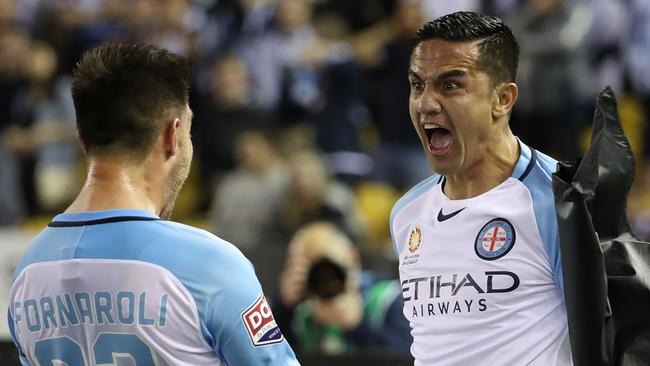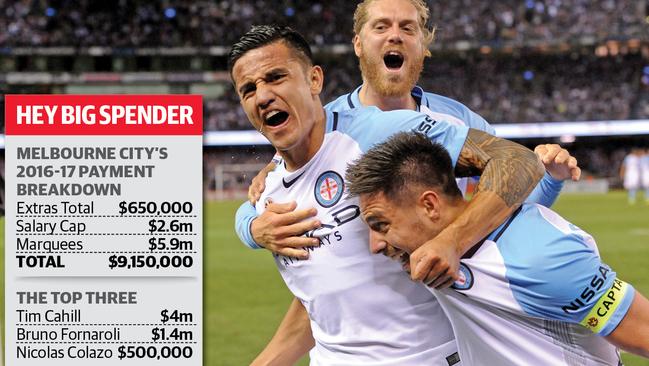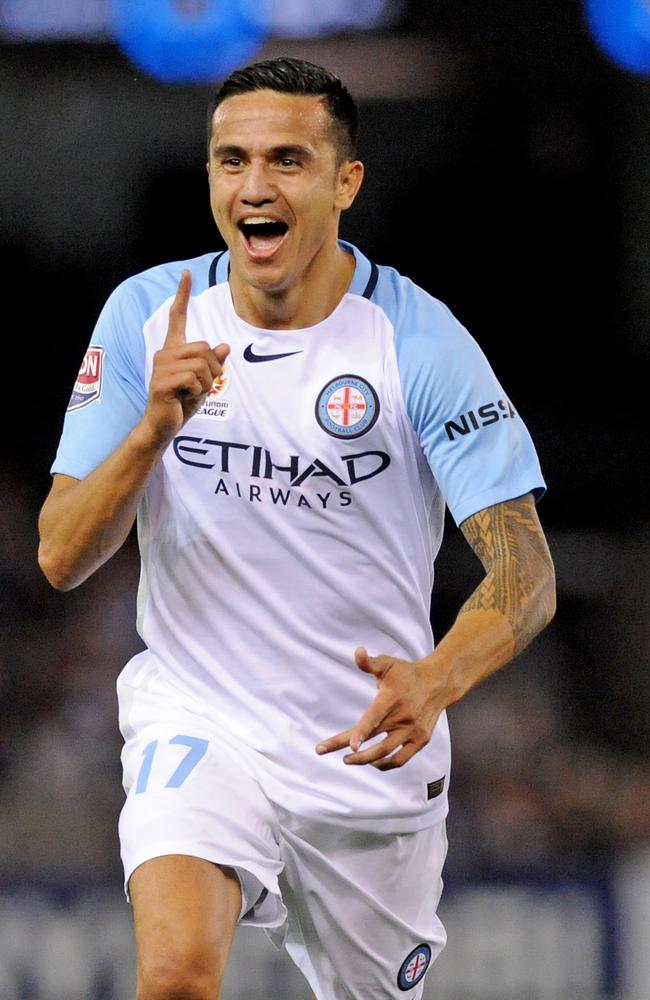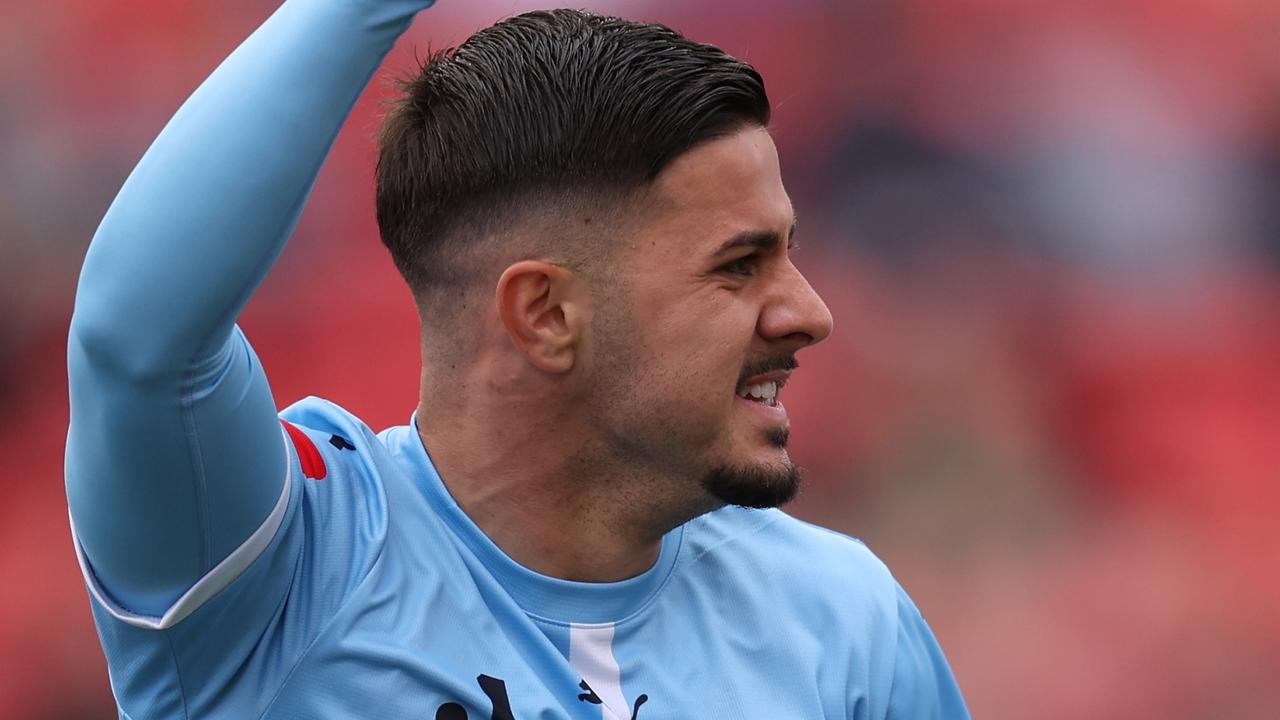Melbourne City’s A-League side the most expensive in Australian soccer history
MELBOURNE City’s class of 2016-17 is the most expensive team in Australian soccer history. Check out how they’re splashing the cash.

Melbourne City
Don't miss out on the headlines from Melbourne City. Followed categories will be added to My News.
MELBOURNE City’s class of 2016-17 is the most expensive team in Australian soccer history.
Tim Cahill’s arrival and Bruno Fornaroli’s bumper marquee upgrade has seen City’s wage bill soar to $9.15m, underlining City Football Group’s backing and completing the transition from ‘Moneyball’ club.
The annual spend is in the vicinity of an AFL club, who operate under a $10.37m salary cap that can be topped up with another $1m for marketing for 45-man squads.
The A-League salary cap is just $2.6m for a 26-man, including four youth players, with no cap on what the two marquees and the guest marquee can be paid.
The Cahill-Fornaroli strike force the most expensive in the league, headlining City’s mega squad.
The Socceroo earns close to $4m in a heavily front-ended deal before he moves into the salary cap next season, while the golden boot winner’s new deal has netted him over $1.4m-a-year.

City, who host Perth Glory at AAMI Park tonight, have netted local and foreign stars during an aggressive recruit spree, with Argentine whiz Nicolas Colazo signed as the final marquee for $500,000-a-season.
Fellow Argentine Fernando Brandan, Dane Michael Jakobsen, fringe Socceroo Luke Brattan and former Leeds United midfielder Neil Kilkenny were all signed for $200,000-plus, joining the likes of keeper Thomas Sorensen, Socceroo Ivan Franjic and Anthony Caceres.
City coach John van ’t Schip said they didn’t feel the pressure of being the A-League’s biggest spenders.
“That’s (A-League economics), and part of what Tim Cahill brings because he’s a guest marquee, outside the category of the (two) marquee positions,’’ van’t Schip said.
“There’s a salary cap and with the players we have in the salary cap we did good work, (football manager) Michael Petrillo and the scouting system really found players we were looking for and then we have to make a decision which kind of players we want in.
“It (expectations) is a process of getting used to performing every time on the highest level possible.

“Do your best and don’t think it’s done, because it’s just the start. If the players realise that, and they do, you can keep growing and improving.’’
City’s wage bill pales in comparison to the $315.32m (GBP196.7m) spent on Manchester City’s Premier League squad last season, but is unprecedented in Australia.
It’s double Melbourne Victory’s wage bill and almost $4m more than the next biggest spenders Sydney FC.
Sydney FC’s 2012-14 squads were the previous big spenders, with the Alessandro Del Piero coup tipping their annual wage bill to over $6.5m, just over City’s 2015-16 spend when Robert Koren and Aaron Mooy were the marquees.
Aside from the $2.6m salary cap outlay and the $5.9m spend on the marquee trio, City has used most of the concessions on offer to all clubs, such as homegrown player rules, youth contracted players, mature-age rookies and relocation expenses, to spend an extra $650,000.


